|
|
|
|
Newspaper Article regarding Charles Turner, Court St. and lumbering (Extract) |
|
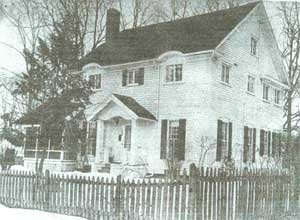 |
1702 Court St., Saginaw City, Michigan
courtesy of Jill Turner Bowser See 1702 court St story, below |
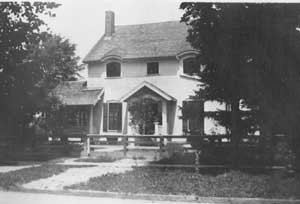 |
1702 Court St., Saginaw City, Michigan
courtesy of Edward Schneider |
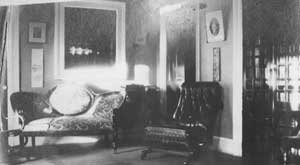 |
Inside 1702 Court St, Saginaw City, Michigan
courtesy of Edward Schneider |
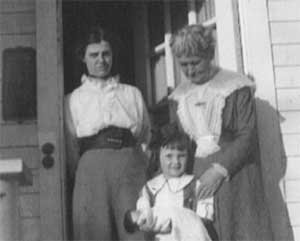 |
Left to Right
Daisy Mabel (Ritchings) Turner courtesy of Edward Schneider |
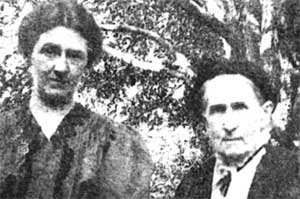 |
May Turner
Emily Knox Turner courtesy of Edward Schneider |
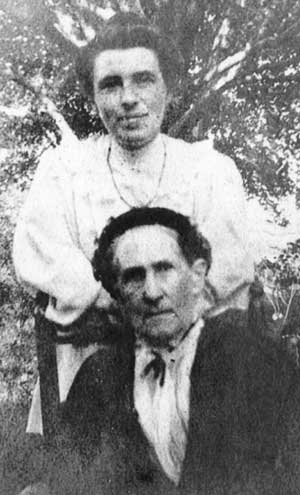 |
Lillian Turner
Emily Knox Turner courtesy of Edward Schneider |
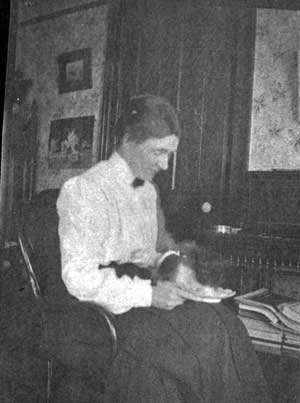 |
Lillian Turner Inside Court St. courtesy of Edward Schneider |
 |
Bottle Holder Invented by William Roy Turner courtesy of Edward Schneider |
1702 COURT STREET, SAGINAW CITY, SAGINAW, MICHIGAN
From article in the Saginaw News, Sec. D, 9 Mar, 1967
Naturalist's Paradise in Mid-City
Turner's Soft Touch
..... On the local scene the charming, unpretentious home built in 1864 by lumber cruiser, Charles Turner, at 1702 Court St exemplifies the touch of gentility and grace so missed in the robust limbering camps. For the pass 22 years it has been the home of Mr. and Mrs. Edward C. MacRae, who have happily furnished it with an abundance of lovely antiques, including several pieces which were left by the Turner family when the homestead was sold. It is a pleasant coincidence that Mrs. MacRae's father, Harrison Porter Kelley was also a lumberman who worked in the Seney area. The family's appreciations of lumberjack history has led Mrs. MacRae to study the folklore, customs songs and poetry of this lusty chapter of Michigan history. The home as it now stands, might best be described in the statement of Sir Joshua Reynolds, "Simplicity is an exact medium between too little and too much." The delightful New England colonial as exemplified in the Turner home is a corollary to the quotation. Its friendly, simple lines and random landscaping offer an uncontrived appeal. Birds, squirrels, and occasional inquisitive rabbit and the pleasant happenstance of myriad crocuses blooming in a haphazard planting throughout the lawn combine to present an atmosphere of country living in the midst of a busy metropolitan area.
That do a-lumbering go,
Come listen to my story,
Which I relate to you.
Of the hardships and the dangers
We undergo each day
While working up in Turner's camp
On the banks of the Chippewa
In a leather-bound lumber cruiser's notebook written in a fine Spencerian hand for O. M. Barnes in June, 1883, and in subsequent ledgers, Turner described his work in detail. "There is on the south side of this section, quite a large amount of good large timber blown down, and partly burnt up. This blown down timber is mostly white pine and road large and good. I should think there was from four to 5 hundred thousand feet o timber destroyed. I should also think all of two thirds of the blown down and burnt timber was white pine. No timber blown down or injured by the fire is included in my estimate of this section." In the same careful script Charlie listed, in on segment of land he was hired ot curise:
Coarse and small 345,000
White pine 200,000
Norway pine 1,440,000
1,985,000
Careful and exact descriptions included such notations as describing the land terrain "high and rolling; sand intermixed with gravel," and a standard printed summary of lumber cruiser's notebooks which state the estimated board feet of various timbers. In case of Charlie's own homestead in Saginaw, However...... (unable to read)
Gaiety was not lacking in Charlie's life even in the Spartan lumber camps he inhabited or managed at one time. Carefully preserved ledgers show that hard=bitten lumberjacks, used to the privations and primitive conditions of camp life longed, nonetheless, for the warmth of music and ere willing to plunk down $5 apiece to buy a fiddle for a musically-minded camp mate so that he might enliven the camp with his scrapings. Considering that total bills for a whole season in camp frequently totalled only from $10 to a maximum of $30. This was a marked tribute to their aesthetic values. A plug of tobacco, hoverer, persists in being the top item purchased as depicted by the ledgers in this heyday of the spittoon era. Laundry could be done for 10 cents, mending for another 10 cents or more. Most expensive items were the durable clothing required by a lumberjack with shoe packs running $2.50, drawers to protect them from the bitter winters @2.50, heavy boots $6.50, wool shirts $2.50, heavy socks 71 cents, mitts $1.00. The fare from Saginaw to St. Louis to one camp is listed as $14 for 26 men with individual hotel bills running 75 cents with 25 cents dinner,
Charlie's family included fiver sons and two daughters. The last of the family to live in the home before it was sold to the MacRaes were the Misses Lillian and Mae Turner, whose main interest centered in education. Among nieces an nephews of Charlie Turner who live in the area include Misses Beatrice and Alice Byron, Mrs. Chester Ellithorpe, Mrs. John Bailey, Miss Jessie Byron and Ralph., Albert Charles and Nelson Byron. All of them have pleasant memories of visiting the homestead as they were growing up